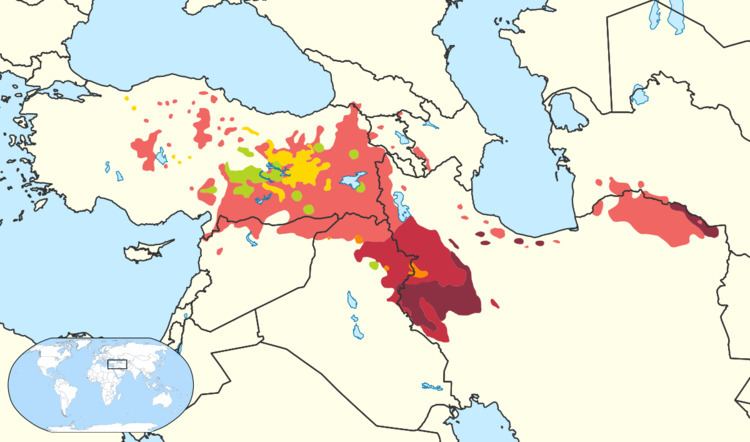Recognised minority
language in Armenia | ||
 | ||
Native to turkey, Armenia, Syria, iraq Native speakers "Very provisional" figure of 10 million in Turkey (2009) Language family Indo-European
Indo-Iranian
Iranian
Western
Northwestern
Kurdish
Northern Kurdish language Dialects Toriki
Botani
Bazidi
Bakrani
Hakkari
Badini
Shengali
Judikani
Jiwanshiri
Alburzi
Qochani
Birjendi
Rihayi Writing system Latin (Turkey), Perso-Arabic (Iran, Iraq, Syria); Cyrillic (formerly in the Soviet Union), Armenian (formerly in the Armenian Soviet Socialist Republic) | ||
Northern Kurdish (kurdiya jorîn; کوردیا ژۆرین), also called Kurmanji (Kurmancî; کورمانجی), is a group of Kurdish dialects predominantly spoken in southeast Turkey, northwest and northeast Iran, northern Iraq and northern Syria. It is the most widespread dialect group of the Kurdish languages. While Kurdish is generally categorized as one of the Northwestern Iranian languages along with Baluchi, it also shares many traits with Southwestern Iranian languages like Persian, apparently due to longstanding and intense historical contacts, and some authorities have gone so far as to classify Kurmanji as a Southwestern or "southern" Iranian language.
Contents
Scripts and books
Northern Kurdish is written using the Latin script in Turkey, where most of its speakers live. Northern Kurdish is the most widely spoken Kurdish language, being spoken by 80% of all Kurds. The earliest textual record of a Kurdish language dates to the 16th century.
Kurmanji is also the ceremonial language of Yazidism. The sacred book Mishefa Reş (the "Yazidi Black Book") and all prayers are written and spoken in Kurmanji.
Dialects
Northern Kurdish forms a dialect continuum of great variability. Loosely, five dialect areas can be distinguished:
The most distinctive of these is Badînî.
